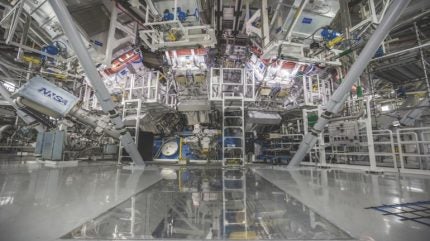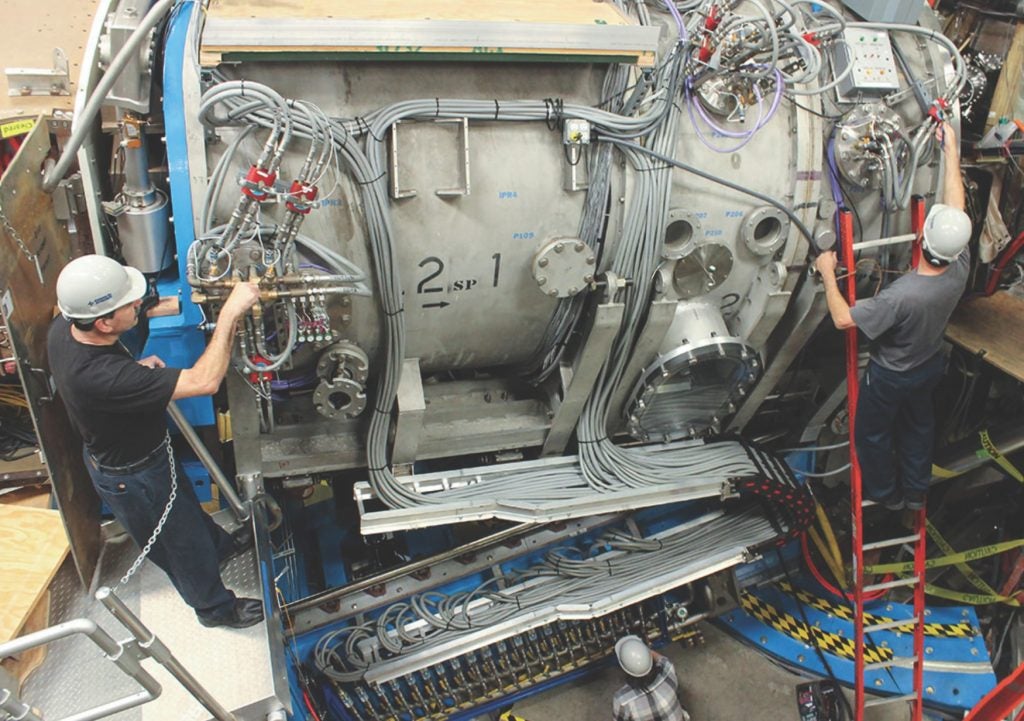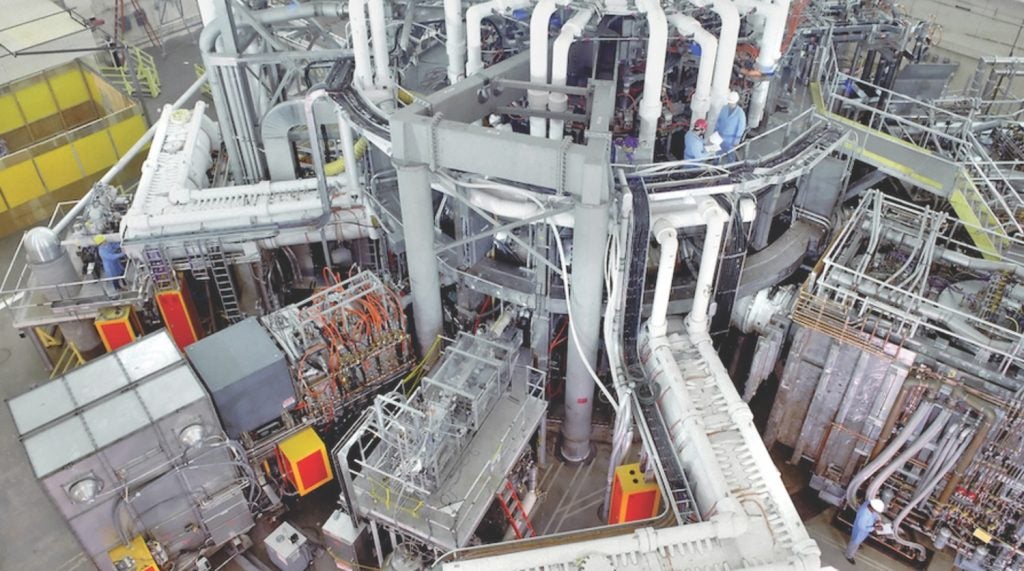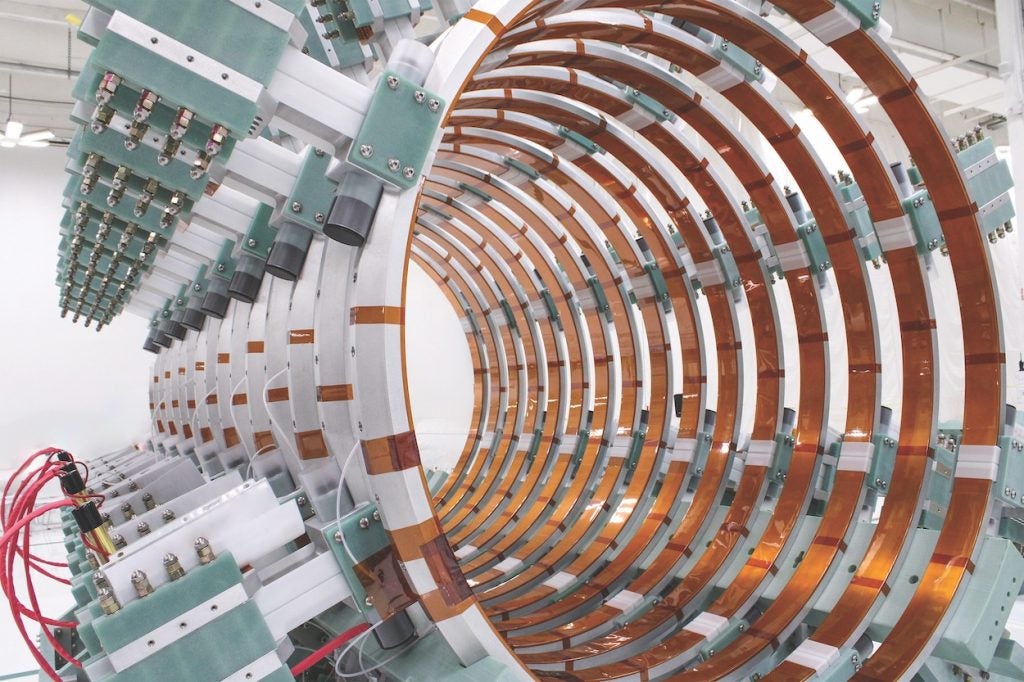
The US NRC is moving on what the Fusion Industry Association (FIA) described as an “aggressive schedule” to license and regulate fusion reactors.
The rulemaking process was kicked off in earnest on 3 January 2023, when the NRC staff presented a paper titled: Options for licensing and regulating fusion energy systems, based on industry consultation. The end of the process is in sight: The NRC plans to publish its proposed rule at the end of May 2025, and the final rule in October 2026.
In its initial document, the NRC staff explained that fusion research and development activities have previously been carried out largely under the auspices
of the Department of Energy (DOE). Research and development activities related to advancing the science of fusion technologies and plasma physics have largely been performed by, or for, the DOE in facilities such as the DIII-D National Fusion Facility in San Diego, California; the Tokamak Fusion Test Reactor and National Spherical Torus Experiment in Princeton, New Jersey; and the National Ignition Facility in Livermore, California. The States of California, New York, Washington, and Wisconsin have each licensed fusion research and development activities.

By 2009 there was an expectation that fusion energy devices would require a regulatory framework, but at that time the NRC believed it was too early to expend significant resources on development. It directed staff to wait until the commercial deployment of fusion technology became more predictable. But commercial companies are now targeting system deployments in the 2030s, so in 2020 the Commission directed the NRC staff to consider appropriate treatment of fusion reactor designs (a rulemaking which would be approached separately from an ongoing rulemaking for advanced nuclear fission reactors, which would create 10 CFR Part 53).
The rulemaking was justified by the benefits that could accrue in having a dedicated regulatory path for fusion. It would be bring anticipated fusion energy systems within the byproduct material regulatory framework; ensure appropriate security requirements for large quantities of tritium held on site; update content-of-application requirements to allow for appropriate application and scaling of existing requirements (e.g., emergency preparedness, financial assurance, and facility design); give regulatory certainty for industry and clarity for public stakeholders; align fusion energy system licensing, regulation, and oversight requirements across the NRC and Agreement State jurisdictions; add decision criteria to determine whether a specific fusion energy system is a utilisation facility; and reduce the potential need for the use of exemptions, licence conditions, or orders to apply appropriate regulatory criteria.

Rulemaking for fusion
In its ‘options’ paper the staff set out some fundamental differences between fission and fusion for its purposes. Fusion involves no plutonium or uranium-235, so the self-sustained neutron chain reaction that defines nuclear fission reactors in NRC documents is not possible and there is no associated fission product hazard. The tritium and other radioactive materials used in fusion are normally categorized by the NRC as byproduct material.
There are three common plasma confinement approaches in fusion: magnetic, inertial, and magneto- inertial. Fusion devices will generally work with charged particles (eg free electrons and atomic nuclei) in the plasma in a vacuum. They will accelerate particles and impart kinetic energy (ie raise plasma temperature and discharge the resultant particulate into a medium (into the plasma, walls, or breeding blankets, creating radioactive material, such as tritium and other activation products). A survey by the Fusion Industry Association revealed that fusion power plants are expected to vary from kilowatts to gigawatts of thermal power. Nevertheless, the expected tritium inventory at commercial fusion power plants is expected to be less than 100g, with 0.1g or less actually in the plasma during operations.
In the event of a vessel breach and loss of vacuum, the plasma that sustains fusion reactions will collapse, ending the reaction and minimising both the energy to drive a radioactive release and the material available for release. In addition, unintended large power excursions are limited because new fuel must continue to be introduced, and burnt fuel removed, to sustain the fusion reaction.
So the key areas for protecting public health and safety are:
- Confinement of radioactive materials; gamma and neutron radiation shielding; the presence or absence of supporting systems for breeding tritium; and the inventories of tritium or other radionuclides at the site, which may be in significant quantities and permeated into structural materials.
- Hazards typical of large industrial energy-producing facilities such as: high magnetic fields; thermal shock from plasma disruption; loss of coolant and cooling; hydrogen or dust explosions; chemical hazards, cryogenic releases; the use of high-power lasers.
Fusion energy systems may use low-activation materials (e.g. ferritic/martensitic steels, vanadium alloys, and silicon carbide/silicon carbide composites) and they do not produce long-lived, highly radioactive waste that requires cooling before being moved to a repository. As a result most of the waste from fusion energy systems will be low-level radioactive waste. However, some proposed designs may produce greater-than-Class-C11 waste and tritiated waste that will need to be assessed as developers of commercial- scale fusion energy systems prepare for licensing.
Disposal pathways for waste volumes will be part of the licensed system, with a decommissioning funding plan. NRC understood that the volumes of waste coming from fusion systems might be greater than those from a fission reactor, depending on the design, the materials used and how the systems are operated. There is uncertainty also over whether radionuclides that would be in question were previously in waste classification tables used in current definitions, such as ‘Class’ C waste.
That means the licence application would have to set out expected waste volumes, plans for disposal and cost, so waste from fusion systems can be disposed of with low- level radioactive waste under the existing framework.
Near-term fusion energy systems are expected to differ from historically considered facilities. The latter were based on deuterium-tritium tokamaks operating at above 3 GWt. However, a survey by the FIA revealed that anticipated near- term fusion power plants are expected to vary greatly in size, starting from as little as a few kilowatts.
For the purposes of assessing regulatory frameworks for fusion energy systems, the NRC staff focused on the potential near-term concepts under development for deployment in the USA. The expectation for devices under development is that:
- No fissile material is present, and criticality is not possible. Currently contemplated fusion energy systems would need active engineered features (e.g. plasma confinement mechanisms, vacuum maintaining systems, fuel injection, external heating) to achieve a self- sustaining fusion reaction.
- Energy and radioactive material production from fusion reactions cease without an intervention in off-normal events or accident scenarios.
- Active post shutdown cooling of the fusion containing radioactive material is not necessary to prevent a loss of radiological material.
- Radionuclides present in the fusion device, in processing or storage, or in activated materials, in any significant mobilisable amount are expected to result in low doses to workers and member of the public during credible accident
Based on these characteristics, the NRC staff expects that for purposes of minimising doses to workers and members of the public, the safety focus of fusion energy systems will be on the control, confinement, and shielding of radioactive material present at the site rather than on the performance and control of the device.
In an online meeting the NRC staff said it believed current 10 CFR Part 20 requirements were adequate for the tritium used in fusion. Activation products might fall under a different rule (Part 37) and that would become clearer as developing fusion energy systems resulted in a better understanding of the isotopes that could be produced.
Storage and aggregation would be considered.
An NRC representative said “we can state with certainty that fusion facilities will be required to have emergency response capability with offsite response being commensurate to the radiological hazard.” Emergency preparedness and response terminology might be aligned with other bodies such as the Federal Emergency Management Agency (FEMA), the DOE and state and local offsite response organisations.
Areas of discussion
Responding to a draft of the rulemaking in May 2024, the Fusion Industries Association had several areas of reflection for the NRC staff.
First among them were two definitions crucial to the new rulemaking: particle accelerator and fusion system. FIA and its member companies say that all foreseeable fusion machines are particle accelerators – which is in agreement with the Commission position – and they want to ensure the regulatory definition “clearly reflects that technical understanding”.
The latest proposed rule from the NRC staff makes clear that particle accelerators can include fusion machines, but does not specify that all fusion machines are particle accelerators.
The NRC proposed removing a statement that the definition applied “at energies usually in excess of 1 MeV.” FIA says the change is not needed to accommodate fusion machines and if it is removed it may expand the definition inadvertently to other technologies.
The NRC staff have also updated the proposed definition of “fusion system” but FIA wants to retain a definition already in legislation (H.R. 6544, the “Atomic Energy Advancement Act”), saying it is simple, practical and robust and it avoids unnecessary inclusion of ancillary materials and systems that may be located on site but not part of the fusion machine.
Other issues raised by FIA are largely around the draft guidance (Preliminary Draft Guidance, NUREG-1556 Volume 22). The organisation says that it should apply solely to the use and possession of byproduct material in commercial fusion machines, not R&D.
FIA says NRC staff have put “strong effort” into making the preliminary draft guidance technology-inclusive and performance-based, particularly given the diversity of fusion technologies. But FIA saw instances where enhanced focus was given to deuterium–tritium (D-T) fusion-based systems and prescriptive requirements were mentioned.
For example one section states that tritium “will be produced as a byproduct” and therefore tritium monitoring of atmospheric stacks is required. FIA wants a change to say tritium “may be produced.”
Licence applications would currently have to include statements about operating and emergency procedures for tritium handling systems and breeding blankets, but not all fusion machines will use these. Heat exchange systems currently “should be fully enclosed to prevent activated materials and tritium from becoming airborne” but FIA wants to replace this prescriptive language to allow a license applicant to state how they will ensure activated tritium does not become airborne.
Separately one company, TAE Technologies, illustrated the variety of fusion technologies now under development. In a May response it reminded NRC of the latter’s stated aim of a “risk -informed, technology neutral approach”. TAE Technologies offers a proton-boron fusion option, which it says has lower radiological and environmental risk. It said regulatory language and guidance should revise references to tritium to clarify that requirements do not apply in systems that do not use or produce tritium because otherwise uncertainty could mean the up-front investment needed to develop new options could be put at risk and create “a perverse market disincentive” against options that it said present lower risk.
The FIA also wants applicants to be able to make the commercial decision to begin construction at their own risk, and says commencement of construction prior to licensing should not serve as a basis for denial of the application. It says regulations should not impose a nine-month submittal timeline as a de facto requirement (as in 10 CFR 30.32). The FIA also says a fusion machine may transition from an R&D focus to commercial operations without significant changes to the facility or design. There are a diversity of proposed fusion designs and “it seems incongruent to assume that a fusion machine transitioning from an R&D purpose to a commercial purpose, would significantly alter its impact on the quality of the environment such that adding a nine-month delay to its licensing review process would be justified”.
In any case, it says, there is a government-wide effort to reduce permitting timeframes for clean energy facilities and “this proposal to add in a nine-month delay, with no immediately obvious environmental or safety benefit, seems to run counter to this”.
Some points refer to operating regimes such as conducting a biennial physical inventory of all licensed material. This “could entail an extensive, physically intensive process that may require full shutdown of the facility for several days, potentially weeks” and with potential radiation exposure.” FIA says “there does not appear to be a clear safety basis” for this requirement.
Some other requirements it says “are not relevant for safety”:
- Appendix F requires construction monitoring and acceptance testing to be done for power supplies and magnets, but these systems do not play any role in confining byproduct material from a public health and safety standpoint, only a fusion performance standpoint.
- Section 8.9.9 requires backup power supplies but many fusion machines will not need backup power supplies to maintain radiological safety.
- Much of the tritium guidance does not reflect the practical experience gained from existing fusion facilities like JET. For example, it should not be assumed a priori that fire detection systems need to shut down ventilation systems to minimise the risk of tritium oxidation

Looking to the mass market
One potential fusion operator, Helion, has asked the NRC not to delay in moving to a licensing framework for a commercial fusion industry where multiple reactors are produced in series and to ensure that its environmental regulations are in scale with the likely environmental effects. In a letter in August this year Helion asked the NRC to “study and produce a report on design-specific licensing frameworks for mass-manufactured fusion machines”. It said because its 50 MWe magneto-inertial fusion device directly converts fusion energy to electricity, it would require less water abstraction and discharge. Its generators would be factory produced and assembled, without the need for radioactive material nor a licence during manufacturing – and it anticipates being able to mass- manufacture “as soon as the early 2030s”.

It says, “The Part 30 framework is well suited to support at-scale deployment… Nonetheless, at the right time, high-throughput, low-impact deployment of mass- manufactured fusion machines will require a more efficient alternative licensing process, that can be made available in parallel with traditional site-by-site licensing approaches.
The company adds: “Even if scale deployment may be a few years away, critical thinking about how the Part 30 framework can evolve to be ready – such as development of a “fusion generator registry” – should start now”.






